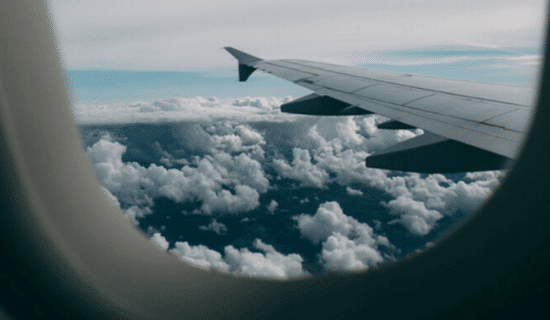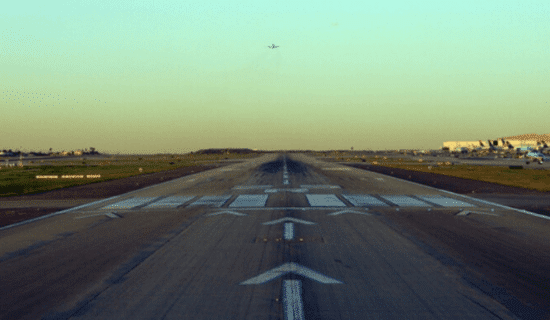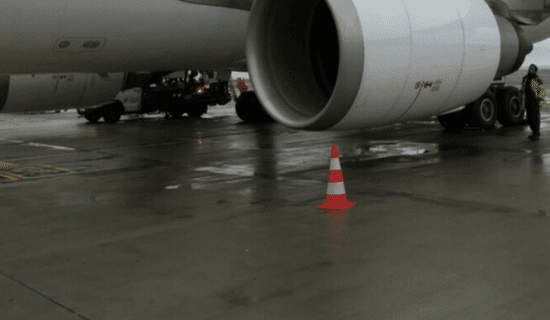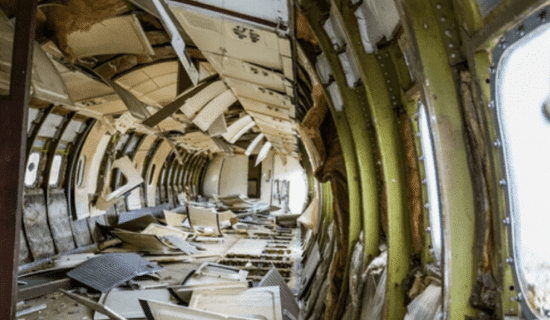Aircraft Accidents Due To Human Error
Unless you suffer from a general fear of flying, when you board an airplane, you probably aren’t thinking about possible causes of a plane crash. That’s a good thing, and not only because it is not constructive to worry. It’s also good to keep in mind that flying is a safe mode of transportation. Even so, aircraft accidents due to human error do occur. When compared to other factors, human error is the leading cause of both general aircraft and commercial airline crashes.
 Aviation Accidents Due to Human Factors
Aviation Accidents Due to Human Factors
The term “general aviation” refers to smaller aircraft that are for either private or commercial use. This category encompasses many types of civil aircraft — everything from charter planes and business jets to helicopters, gliders and even hot-air balloons. Statistically speaking, general aviation aircraft are both more common and risky than commercial planes.
Despite the inherent risks associated with flying in any type of aircraft, the National Transportation Safety Board (NTSB) reported in 2015 that general aviation accidents had been steadily declining for years, and associated fatalities had also declined. Commercial airline crash statistics may be even more encouraging: During the seven-year period from 2010 through 2016, not one U.S.-based commercial airline crash resulted in a fatality. In 2017, there were two commercial airline crashes that resulted in fatalities.
Even with these positive trends, fatal crashes continue to occur in general aviation. Furthermore, the accident rate for non-scheduled air carrier flights (which can include chartered flights, along with air taxi and medical taxi flights) actually increased slightly in 2015 from previous years. Helicopter crashes in particular have been more prevalent in the news recently, which has led many of us to wonder how safe helicopters are in comparison to commercial planes.
While faulty equipment and unsafe weather conditions, including turbulence, can play important roles in some crashes, experts say that aviation accidents due to human factors are by far the most common cause of plane accidents. Boeing attributes 80 percent of commercial airline crashes to human error. Of course, “human error” can include mistakes made not just by aircraft pilots, but also by other people involved in aircraft flights, such as air traffic controllers, mechanics and maintenance crew members. Any one of these individuals working in the aviation industry can make a mistake or a bad decision that ultimately leads to an aviation accident.
Aviation Safety magazine reports an even higher number than that reported by Boeing, with close to 90 percent of crashes being due to pilot error. These can be either the sole cause or a contributing factor of the accident, such as when a pilot makes a mistake when trying to navigate with faulty equipment or in bad weather.
 Pilot Error Statistics
Pilot Error Statistics
What exactly is “pilot error,” and what do pilot error statistics tell us about the cause of aircraft accidents?
The term “pilot error” refers to the various types of mistakes that pilots might make at any point during the operation of an aircraft, which can include both tactical errors (mistakes in decision-making) and operational errors (mistakes that result from poor training).
Pilots are required to perform many actions and make countless decisions during the course of operating an aircraft, and sometimes they make mistakes that result in a crash, like the case of a 2009 Air France flight from Rio to Paris. Investigators determined that crash was caused by the crew’s “inappropriate response” to a malfunction with the plane’s speed sensors, and noted that the crash could have been avoided had the pilots reacted appropriately.
Operator distraction is a common factor in aircraft accidents, and it can occur even when a pilot is focused on doing his or her job safely. A commercial airline flight nearly crashed at Denver International Airport in 2009, for example, when its pilot became distracted by landing preparations and wound up trying to accelerate the plane while the brakes were in use. Fortunately, the pilot was ultimately able to land safely, but not all risky situations during a flight turn out so well.
Other types of pilot error resulting in aircraft crashes include pilots who fly under the influence of drugs or alcohol. A 2013 Lion Air jet crash in Indonesia, initially thought to have been caused by wind shear, was ultimately found to have occurred due to pilot inebriation. In fact, the majority of airline crashes in Indonesia have been found to be connected to pilots who tested positive for drug use.
Two recent airline crashes in Costa Rica involving a particular airline company, Nature Air, raised concerns among both passengers and aviation authorities about the company’s track record of safe air operations. Ultimately, the Costa Rican civil aviation agency suspended the airline in early 2018, as the investigation into the cause of the most recent crash continued.
 Aircraft Accidents Due to Maintenance Errors
Aircraft Accidents Due to Maintenance Errors
Though human error is the leading cause of aircraft accidents, pilot error statistics tell only part of the story behind what causes planes to crash. Mechanical failures and maintenance errors are among the other possible causes behind airline accidents, which means that airplane mechanics are a crucial part of ensuring that everyone aboard a flight arrives safely at their planned destination.
When an aircraft has an accident, investigators look to the flight data recorder for information about all sorts of factors, including fuel levels, brake operation, pilot actions throughout the flight, airspeed and more. Crash investigators use this information to determine whether the crash resulted from a mistake on the part of the pilot, a mechanical failure or a maintenance error.
In 2005, an accident occurred when an amphibious airplane operated by Chalk’s Ocean Airline crashed into a shipping channel near the Port of Miami, Florida. Once crash investigators concluded their analysis, the NTSB reported their findings: that the crash had been caused by the separation of the plane’s right wing during flight, and that this had occurred due to dual failures in the airline’s aircraft maintenance program as well as on the part of the Federal Aviation Administration (FAA), which should have identified and corrected the airline’s inadequate maintenance procedures.
A more recent helicopter accident has brought up similar concerns about the FAA’s role in increasing aircraft safety and preventing aviation accidents. In March 2018, a tour helicopter crashed into New York’s East River, killing five passengers who drowned when they were unable to release themselves from their safety harnesses. After the fatal crash, experts and Michael Slack from Slack Davis Sanger, raised concerns that the helicopter touring industry is running without enough oversight, and the NTSB called on the FAA to suspend all flights using harness systems that don’t allow passengers to release them quickly in the event of an emergency.
 Aircraft Accidents Due to Automation
Aircraft Accidents Due to Automation
In modern life, ever-developing technologies are often used to move toward automation in a bid to increase safety and save people both time and effort. Aviation crash statistics, however, prove that automation isn’t always the best or safest option.
In 2013, the FAA released a report detailing their findings that airline pilots who relied too much on their planes’ automated systems were more likely to have accidents. A direct correlation was found between automation and aircraft safety incidents, including crashes. Based on these findings, the FAA recommended that airlines provide their pilots with extra training in proper use of aircrafts’ automated systems to increase flight safety.
To be fair, the human factor isn’t always associated with mistakes and bad judgment, so driverless planes aren’t necessarily the answer to the challenge of keeping air travelers safe. Along with making errors that have led to aviation accidents, pilots have also made tough decisions during flights that had a positive outcome. One such case was a British Airways flight in 2015 that was scheduled to fly from Las Vegas to London. The pilot aborted the flight during takeoff in response to an engine fire. That pilot’s decisions, made quickly, in the moment and under pressure, likely saved the lives of everyone on board. Out of over 170 passengers and crew members on board, only 27 people suffered minor injuries, most during the process of evacuating the plane (suffering abrasions while descending the evacuation slides).
Slack Davis Sanger Attorneys: Experienced in Aviation Law
Transportation safety is ever-evolving, and the overall trend in aviation has been toward greater safety over the past one hundred-plus years since the first commercial flights began carrying passengers to destinations around the world. Aviation officials and lawmakers are working constantly, hand in hand, to improve passenger safety in both commercial and general aviation. Regulations and restrictions have been put in place in order to reduce human error in aviation, and rules are revised frequently in response to current research regarding the causes behind airline crashes.
Other industries, including within the private sector, are currently working toward greater aviation safety, as well. Due to rising concerns among both aviation officials and airline passengers about the safety of chartered flights, for example, a growing number of companies are providing safety audit reports, for a fee, to passengers or businesses wanting to research airlines’ safety statistics before reserving tickets for a flight.
Despite these strides toward increased aviation safety, however, aircraft accidents do still occur. When planes crash, the toll is often tragic in terms of life-altering injuries and loss of life. If you or someone you love has suffered an injury or even death in a plane or helicopter crash due to negligence or pilot error, let Slack Davis Sanger help. Our experienced and dedicated attorneys have a proven track record in personal injury law, including major injury litigation related to aviation accidents. We work tirelessly to get the results our clients deserve and secure the compensation they need.

The firm handles cases involving catastrophic personal injuries and deaths. Our work spans three decades of handling airplane and helicopter crashes, truck and car accidents, oilfield and construction accidents, and other devastating accidents. We try lawsuits throughout the country in both federal and state courts and have recovered hundreds of millions of dollars for our clients. To date, we have handled or tried cases in 47 states, read more about our attorneys and firm.
